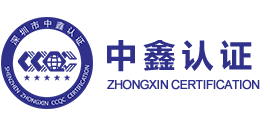Introduction and Significance of ISO9001/14001/45001 Management System
Date:2023-09-15Author:Zhongxin CertificationView:8729次Link:Zhongxin Certification
ISO three system certification is a collective term for the merger of three ISO systems, also known as three standard system certification or three standard integration, including ISO9001 quality management system, ISO14001 environmental management system, and ISO45001 occupational health management system.
1、 ISO9001 Quality Management System
ISO9001: 2015 is a quality management system standard developed by the International Organization for Standardization (ISO), which was transformed from the world's first quality management system standard BS 5750 (written by BSI). ISO 9001 is the most mature quality framework in the world to date, with over 750000 organizations in 161 countries/regions using this framework. ISO 9001 not only establishes standards for quality management systems, but also for overall management systems.
ISO9001 is used to demonstrate an organization's ability to provide products that meet customer requirements and applicable regulatory requirements, with the aim of enhancing customer satisfaction. With the continuous expansion and increasing internationalization of the commodity economy, in order to improve the credibility of products, reduce repeated inspections, weaken and eliminate trade technical barriers, and safeguard the rights and interests of producers, distributors, users, and consumers, this third-party certification party is not supported by the economic interests of both production and sales parties. Notarization and scientificity are the passport for countries to evaluate and supervise the quality of products and enterprises; As the basis for customers to audit the supplier's quality system; The enterprise has the ability to meet the technical requirements of its ordered products. Any certified enterprise that has achieved international standards in the integration of various management systems indicates that the enterprise can continuously and stably provide customers with expected and satisfactory qualified products. From the perspective of consumers, the company puts customers at the center, meets their needs, achieves customer satisfaction, and does not induce consumers. The ISO9000 family of standards is a series of standards on quality management and quality assurance issued by the International Organization for Standardization (ISO) in 1987, which are widely used worldwide. In 1994, the International Organization for Standardization conducted a comprehensive revision and reissued it for implementation. In 2000, ISO made significant revisions to the ISO9000 series of standards.
2、 ISO14001 Environmental Management System
ISO14001: 2015 is an environmental management system standard developed by the International Organization for Standardization (ISO), which is an integral part of a comprehensive management system within an organization. It includes the organizational structure, planning activities, institutional responsibilities, practices, procedures, processes, and resources required for developing, implementing, implementing, reviewing, and maintaining environmental policies. It also includes management aspects such as the organization's environmental policy, goals, and indicators.
The environmental management system can be described as follows: it is a planned and coordinated management activity of an organization, with standardized action procedures and documented control mechanisms. It is implemented through an organizational structure with clear responsibilities and obligations, with the aim of preventing adverse impacts on the environment. Implementing ISO14001 standards in enterprises can achieve the goals of energy conservation, cost optimization, improving corporate image, and enhancing competitiveness. Obtaining ISO14000 certification has become an entry permit to break international green barriers and enter the European and American markets, and has gradually become one of the necessary conditions for organizations to carry out production, business activities, and trade exchanges.
3、 ISO 45001 Occupational Health and Safety Management System
ISO 45001 is an occupational health and safety management system standard developed by the International Organization for Standardization (ISO), aiming to provide a framework to help organizations manage and improve occupational health and safety, provide scientific and effective occupational health and safety management system norms and guidelines for enterprises, improve the level of occupational health and safety management, form a mechanism for self-monitoring, self discovery, and self-improvement, thereby improving the physical and mental health and safety and health skills of workers, significantly reducing cost investment and improving work efficiency, and establishing a good quality, reputation, and image in society. By obtaining ISO 45001 certification, organizations can demonstrate that their occupational health and safety management has been recognized.
4、 The benefits of ISO three system certification
1. Simplify and clarify the quality management system, establish a continuous improvement management system, enhance the competitiveness of the enterprise, expand market share, establish an excellent corporate image, improve the quality reputation of the organization, and achieve promotional benefits; 2. Improving product quality is beneficial for protecting the interests of consumers; 3. Reduce the repeated inspection costs of enterprises by society, improve working conditions, enhance the physical and mental health and safety and hygiene skills of workers, significantly reduce cost investment and improve work efficiency; 4. Participating in bidding activities can earn extra points and receive government subsidies; 5. Beneficial for enhancing customer trust, facilitating market expansion for enterprises, and developing new customers.



